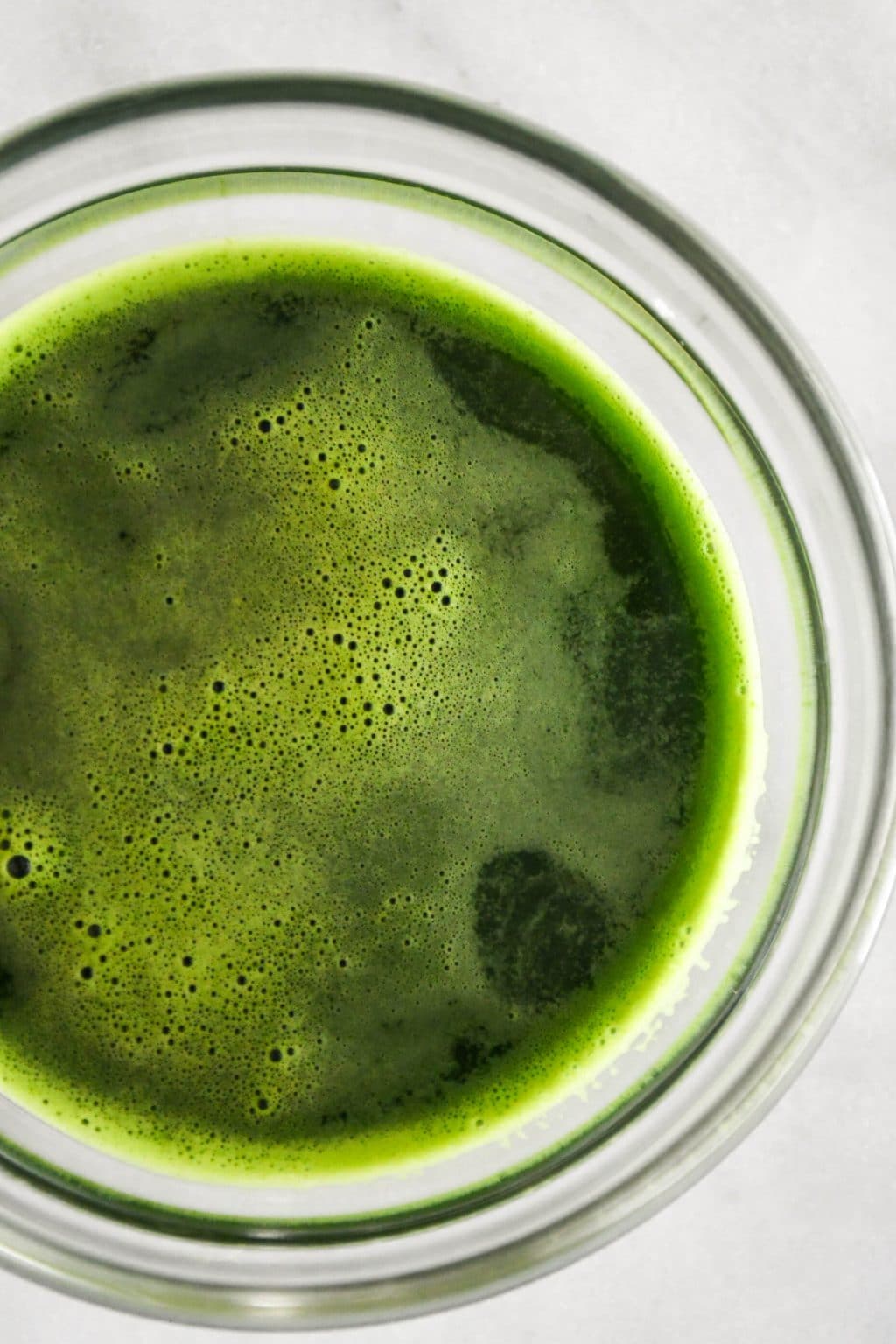How to Make Pandan Juice in 10 minutes or Less
Pandan is an indispensable ingredient in many Asian treats and desserts. Favoured for its unique flavour, fragrance and natural green colouring, pandan juice is easy to extract. A food blender and strainer makes this effortless and quick, in under 10 mins.
There’s no doubting that Asians love pandan! Pandan refers to a herbaceous tropical plant native to South-East Asia.
Treasured for its unique flavour and sweet fragrance, pandan leaves and pandan juices are popular for cooking as well as baking purposes.

Whole pandan leaves can be used to infuse liquids such as sweet soups and beverages with its fragrance and flavour.
When cooking, we use it also to wrap savoury foods like meat and sticky rice in Asian cuisine.
But pandan leaves and pandan juice are not only used in cooking and baking. In fact, I didn’t discover until recently that the entire plant has specific medicinal properties.
The roots of the plant are used to treat diabetes, whilst skin diseases can be treated with the leaves.
Also, consuming the plant can induce the flow of urine due to its diuretic properties.
Popular Asian treats flavoured with pandan
Here are my Top 4 Pandan Recipes:




Top Left: No-Fail Pandan Chiffon Cake.
An iconic sweet cake in South East Asia, pandan chiffon cake is a unique treat!
Rich with Asian flavours of coconut milk and pandan juice, it is moist, creamy and just perfectly sweet!
It has the cotton-soft, smooth, light and fluffy texture of Asian-style chiffon cakes!
Top Right: Homemade Nonya Pandan Kaya (Coconut Jam).
A coconut egg jam, pandan kaya is widely enjoyed as a spread over toasted bread. Also, we love it in soft buns, and as a cake filling or topping.
Made primarily with coconut milk and eggs, subtly flavoured with pandan juices, and sweetened with sugar, kaya has a smooth and creamy texture and is a rich tasting spread.
Bottom Left: Easy, Do-It-Yourself Hainanese Kaya (Coconut Jam).
Easy recipe for rich and creamy homemade Hainanese kaya (coconut jam)!
You only need the base ingredients of a custard – sugar, eggs, and coconut milk – to make this delicious, distinct caramel coconut jam.
Bottom Right: Pandan Raisin Bread with Crumble Topping.
This pandan-flavoured raisin bread is just a little more special!
Generously sprinkled with a lightly sweet and buttery crumble topping and baked to golden crispness, it has a tender and moist crumb.
Step-by-step: How to extract pandan juice (pandan extract)
Here’s the easiest way to obtain pandan juice from fresh pandan leaves. Just cut, process in a blender with water, and strain.
You’ll have fresh pandan juice ready to use in just a few minutes!






- First, cut cleaned pandan leaves into 2-cm (1-inch) sections.
- Second, place into a blender or food processor and add water.
- Third, process into a fine pulp.
- Fourth, scoop out the pulp into a metal sieve, placed over a bowl to catch the juices.
- Fifth, press against the pulp, with the back of a metal spoon to strain the juices.
- Sixth, set aside the amount needed for your recipe. Store the rest in an air-tight jar and keep chilled for up to 5 days.
How to get pandan extract
If you want a more distinct pandan flavour, you can use pandan juice in a concentrated form by rendering natural pandan extract. Here’s how:
After extracting pandan juice, store in a jar with an air-tight lid. Let it sit overnight, preferably for at least 18 to 20 hours.
The water will separate from the darker green, heavier sediment at the bottom.
Without disturbing the sediment, simply scoop out or pour away the water, leaving behind the natural pandan extract.
Just be sure that when pouring away the water, you leave behind enough for the recipe in mind.
Ingredients
- 10 pandan leaves
- 5 tbsp water
Instructions
- Slice off the end of the pandan stem. Separate the leaves and wash thoroughly under running water, until free of dirt and soil.
- Cut cleaned pandan leaves into 2-cm (1-inch) sections with a kitchen knife or a pair of scissors.
- Place into a blender or food processor and add water.
- Process into a fine pulp.
- Scoop out the pulp into a metal sieve, placed over a bowl to catch the juices.
- Press against the pulp, with the back of a metal spoon to strain the juices.
- Set aside the amount needed for your recipe. Store the rest in an air-tight jar and keep chilled for up to 5 days.





